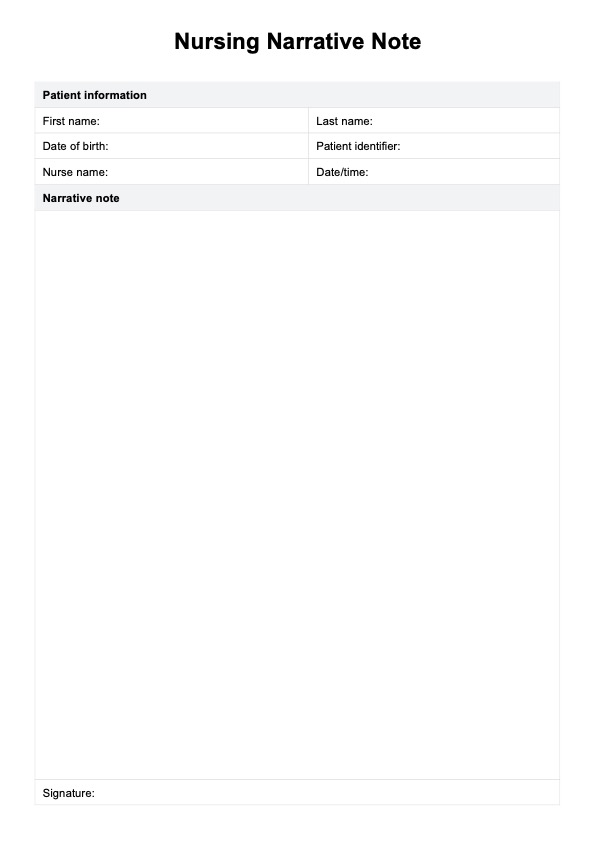There's no right way to write a good nursing note for a patient's progress. However, you should keep some tips in mind. Firstly, keep them concise. Because you're writing a narrative note, this doesn't mean that you can write an entire essay about a patient. Your note may be more comprehensive than a SOAP, but it must be succinct for clarity. Avoiding abbreviations to minimize confusion and double-checking that all medical terms are correctly applied and spelled are also recommended. It can be easy to get things wrong when writing notes amid a busy session, so always take the time to review!

Nursing Narrative Note Template
Attend to your patient's needs and enhance note-taking procedures within clinical environments without compromise.
Nursing Narrative Note Template Template
Commonly asked questions
Yes, your patient will likely view these nurse notes, so it's important always to use objective data and avoid biased or judgmental comments. All statements should be medically based and supported with relevant evidence. This is standard practice and should be done regardless of whether your patient views your notes.
Nursing charting is similar to nursing narrative notes in that medical assessment and intervention details are listed. However, nursing charting is more specific and is broken down into specific sections. It is considered less insightful and is typically used in large organizations that see many patients or during busy periods. Narrative notes are a good way to assess more broadly, with several details included for patients with complex health issues.
EHR and practice management software
Get started for free
*No credit card required
Free
$0/usd
Unlimited clients
Telehealth
1GB of storage
Client portal text
Automated billing and online payments











